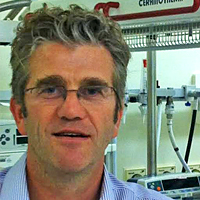Feeding Preterm Babies after Hospital Discharge: Breast-milk, Fortifier, Supplements and Complementary Foods
- Duration: 60 Mins
- Credits: 1 CERP, 1 L-CERP
- Learning Format: Webinar
- Handout: Yes
- Origin: Neonatal 2017
Abstract:
Survival in preterm infants has increased over the last few years, and this has been accompanied by an increasing focus on the importance of nutrition and the effects of preterm birth on later outcomes. Providing nutrition to sick preterm infants in the NICU is complex, and almost all preterm infants are discharged with growth outcomes (weight and length) considerably below their birth centiles. This is important because data show an association between poorer growth and nutritional status in the NICU, and worse longterm neurodevelopmental outcomes. Whilst greater efforts are required to improve nutritional status prior to discharge, the post-discharge setting represents a time period when brain growth is also rapid, and where the potential exists to improve outcome through nutritional interventions. However, the potential benefits of improved brain outcomes need to be considered alongside the possibility of metablic harm induced by excessively rapid growth which may increase risks of obesity and later chronic disease. This talk will consider the continued importance of breast milk after discharge, the potential role of fortifiers and supplements in meeting nutrient requirements, and issues around the timing of introduction of complementary foods.
Learning Objectives:
Objective 1: The pattern of brain growth during the 3rd trimester and the first 2 years of life Objective 2: Describe the long-term brain benefits of breastmilk feeding for preterm infants Objective 3: Understand the potential risks and benefits of continued use of breast-milk fortifier Objective 4: Understand the reasons for the use of Vitamin D and Iron following discharge Objective 5: Consider issues relating to the introduction of complementary foods in preterm infants Objective 6: Appreciate the concept of complex interventions in nutritional management

View Details / Enroll







